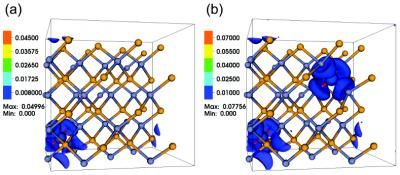Doping powers new thermoelectric material
In the production of power, nearly two-thirds of energy input from fossil fuels is lost as waste heat. Industry is hungry for materials that can convert this heat to useful electricity, but a good thermoelectric material is hard to find.
Increasing the efficiency of thermoelectric materials is essential if they are to be used commercially. Northwestern University researchers now report that doping tin selenide with sodium boosts its performance as a thermoelectric material, pushing it toward usefulness. The doped material produces a significantly greater amount of electricity than the undoped material, given the same amount of heat input.
The Northwestern development could lead to new thermoelectric devices with potential applications in the automobile industry, glass- and brick-making factories, refineries, coal- and gas-fired power plants, and places where large combustion engines operate continuously.
Most semiconducting materials, such as silicon, have only one conduction band to work with for doping, but tin selenide is unusual and has multiple bands; the researchers took advantage of these bands. They showed they could use sodium to access these channels and send electrons quickly through the material, driving up the heat conversion efficiency.
"The secret to our material is that multiband doping produces enhanced electrical properties," said Mercouri G. Kanatzidis, an inorganic chemist who led the multidisciplinary team. "By doping multiple bands, we are able to multiply the positive effect. To increase the efficiency, we need the electrons to be as mobile as possible. Tin selenide provides us with a superhighway -- it has at least four fast-moving lanes for hole carriers instead of one congested lane."
Kanatzidis, a Charles E. and Emma H. Morrison Professor of Chemistry in the Weinberg College of Arts and Sciences, is a world leader in thermoelectric materials research. He is a corresponding author of the paper.
To produce a voltage, a good thermoelectric material needs to maintain a hot side -- where the waste heat is, for example -- while the other side remains cool. Less than two years ago, Kanatzidis and his team, with postdoctoral fellow Lidong Zhao as protagonist, identified tin selenide as a surprisingly good thermoelectric material; it is a poor conductor of heat while maintaining good electrical conductivity.
Kanatzidis' colleague Christopher M. Wolverton, a computational theorist, calculated the electronic structure of tin selenide. He found the electrical properties could be improved by adding a doping material.
"Tin selenide is very unusual, not only because of its exceedingly low thermal conductivity, but also because it has many conduction lanes," said Wolverton, a senior author of the paper and professor of materials science and engineering in the McCormick School of Engineering and Applied Science. "Our calculations said if the material could be doped, its thermal power and electrical conductivity would increase. But we didn't know what to use as a dopant."
Sodium was the first dopant the researchers tried, and it produced the results they were looking for. "Chris' computations opened our eyes to doping," Kanatzidis said. He and Zhao successfully grew crystals of the new doped material.
The researchers also were pleased to see that adding sodium did not affect the already very low thermal conductivity of the material. It stayed low, so the heat stays on one side of the thermoelectric material. Electrons like to be in a low-energy state, so they move from the hot (high-energy) side to the cool side. The hot side becomes positive, and the cool side becomes negative, creating a voltage.
"Previously, there was no obvious path for finding improved thermoelectrics," Wolverton said. "Now we have discovered a few useful knobs to turn as we develop new materials."
The efficiency of waste heat conversion in thermoelectrics is reflected by its "figure of merit," called ZT. In April 2014, the researchers reported that tin selenide exhibits a ZT of 2.6 at around 650 degrees Celsius. That was the highest ZT to date -- a world record. But the undoped material produced that record-high ZT only at that temperature.
The new doped material produces high ZTs across a broad temperature range, from room temperature to 500 degrees Celsius. Thus, the average ZT of the doped material is much higher, resulting in higher conversion efficiency.
"Now we have record-high ZTs across a broad range of temperatures," Kanatzidis said. "The larger the temperature difference in a thermoelectric device, the greater the efficiency."
Original publication
Li-Dong Zhao, Gangjian Tan, Shiqiang Hao, Jiaqing He, Yanling Pei, Hang Chi, Heng Wang, Shengkai Gong, Huibin Xu, Vinayak P. Dravid, Ctirad Uher, G. Jeffrey Snyder, Chris Wolverton, and Mercouri G. Kanatzidis; "Ultrahigh power factor and thermoelectric performance in hole-doped single-crystal SnSe"; Science; 2015




























































